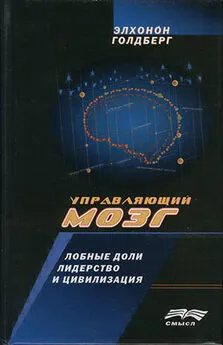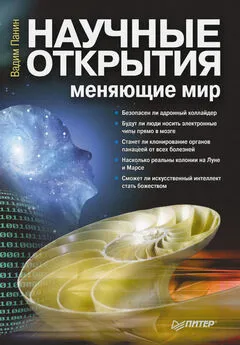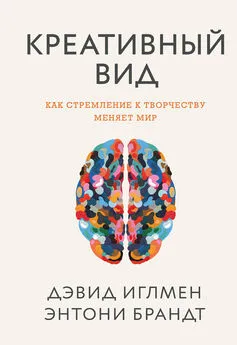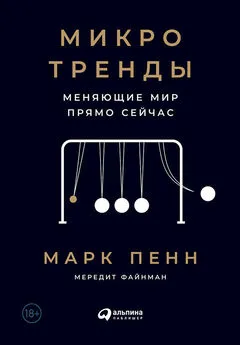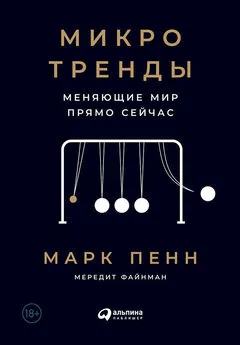Элхонон Голдберг - Креативный мозг [Как рождаются идеи, меняющие мир] [litres]
- Название:Креативный мозг [Как рождаются идеи, меняющие мир] [litres]
- Автор:
- Жанр:
- Издательство:Литагент 5 редакция «БОМБОРА»
- Год:2019
- Город:Москва
- ISBN:978-5-04-105057-3
- Рейтинг:
- Избранное:Добавить в избранное
-
Отзывы:
-
Ваша оценка:
Элхонон Голдберг - Креативный мозг [Как рождаются идеи, меняющие мир] [litres] краткое содержание
Какова природа творчества? Какая работа разума скрывается за его мистикой? Каковы эволюционные корни креативности? В книге нейробиолога и нейропсихолога Элхонона Голдберга эти и другие вопросы рассматриваются как с научной, так с исторической и культурологической точек зрения, превращаясь в масштабное и увлекательное исследование. Опираясь на результаты последних открытий и исследований мозга, а также на собственные идеи и гипотезы, Голдберг приходит к оригинальному, убедительному и даже провокационному пониманию природы творчества и креативности. Читатель совершит удивительное путешествие сквозь эпохи и страны: от античности до далекого будущего, от Западной Европы до Юго-Восточной Азии. Автор делает смелые прогнозы о перспективных направлениях творчества и инноваций, объясняя их биологические и культурные истоки, рассказывает о том, как они сформируют общество будущего и изменят способы развития человеческого мозга.
Креативный мозг [Как рождаются идеи, меняющие мир] [litres] - читать онлайн бесплатно ознакомительный отрывок
Интервал:
Закладка:
19. E. Goldberg, D. Roediger, N. E. Kucukboyaci, C. Carlson, O. Devinsky, R. Kuzniecky, E. Halgren, and T. Thesen, «Hemispheric Asymmetries of Cortical Volume in the Human Brain», Cortex 49 (2013): 200–210.
20. D. Sridharan, D. J. Levitin, and V. Menon, «A Critical Role for the Right Frontoinsular Cortex in Switching Between Central-Executive and Default-Mode Networks», Proceedings of the National Academy of Sciences 105 (2008): 12569—12574; D. Sridharan, D. J. Levitin, C. H. Chafe, J. Berger, and V. Menon, «Neural Dynamics of Event Segmentation in Music: Converging Evidence for Dissociable Ventral and Dorsal Networks», Neuron 55 (2007): 521–532; S. L. Bressler and V. Menon, «Large-scale Brain Networks in Cognition: Emerging Methods and Principles», Trends in Cognitive Sciences 14 (2010): 277–290.
21. E. Goldberg, The New Executive Brain: Frontal Lobes in a Complex World (New York: Oxford University Press, 2009); M. Koenigs and J. Grafman, «The Functional Neuroanatomy of Depression: Distinct Roles for Ventromedial and Dorsolateral Prefrontal Cortex», Behavioural Brain Research 201 (2009): 239–243.
22. X. J. Chai, S. Whitfield-Gabrieli, A. K. Shinn, J. D. E. Gabrieli, A. N. Castañón, J. M. McCarthy, B. M. Cohen, and D. Öngür, «Abnormal Medial Prefrontal Cortex Resting-State Connectivity in Bipolar Disorder and Schizophrenia», Neuropsychopharmacology 36 (2011): 2009–2017; P. J. Hellyer, M. Shanahan, G. Scott, R. J. Wise, D. J. Sharp, and R. Leech, «The Control of Global Brain Dynamics: Opposing Actions of Frontoparietal Control and Default Mode Networks on Attention», Journal of Neuroscience 34 (2014): 451–461.
23. C. F. Jacobsen, «An Experimental Analysis of the Frontal Association Areas in Primates», Journal of Nervous and Mental Disease 82 (1935): 1—14; C. F. Jacobsen, «Studies of Cerebral Function in Primates. I. The Functions of the Frontal Association Areas in Monkeys», Comparative Psychology Monographs 13 (1936): 1—60.
24. J. M. Fuster and G. E. Alexander, «Delayed Response Deficit by Cryogenic Depression of Frontal Cortex», Brain Research 20 (1970): 85–90; J. M. Fuster, «Unit Activity in Prefrontal Cortex During Delayed-Response Performance: Neuronal Correlates of Transient Memory», Journal of Neurophysiology 36 (1973): 61–78; J. M. Fuster and G. E. Alexander, «Neuron Activity Related to Short-term Memory», Science 173 (1971): 652–654.
25. A. Baddeley, «Working Memory: Looking Back and Looking Forward», Nature Reviews Neuroscience 4 (2003): 829–839.
26. L. D. Selemon and P. S. Goldman-Rakic, «Common Cortical and Subcortical Targets of the Dorsolateral Prefrontal and Posterior Parietal Cortices in the Rhesus Monkey: Evidence for a Distributed Neural Network Subserving Spatially Guided Behavior», Journal of Neuroscience 8 (1988): 4049–4068; P. S. Goldman-Rakic, «Circuitry of the Primate Prefrontal Cortex and the Regulation of Behavior by Representational Memoir», in Handbook of Physiology, The Nervous System, Higher Functions of the Brain, Ed. F. Plum (Bethesda, MD: American Physiological Society, 1987): 373–417; M. L. Schwartz and P. S. Goldman-Rakic, «Prenatal Specification of Callosal Connections in Rhesus Monkey», Journal of Comparative Neurology 307 (1991): 144–162.
27. J. M. Fuster, The Prefrontal Cortex, 5th edn. (London, UK: Academic Press, 2015).
28. W. K. Kirchner, «Age Differences in Short-term Retention of Rapidly Changing Information», Journal of Experimental Psychology 55 (1958): 352–358; S. M. Jaeggi, M. Buschkuehl, W. J. Perrig, and B. Meier, «The Concurrent Validity of the Nback Task as a Working Memory Measure», Memory 18 (2010): 394–412; S. M. Jaeggi, M. Buschkuehl, J. Jonides, and W. J. Perrig, «Improving Fluid Intelligence with Training on Working Memory», Proceedings of the National Academy of Sciences 105 (2008): 6829–6833.
29. J. M. Fuster, The Neuroscience of Freedom and Creativity: Our Predictive Brain (Cambridge, UK: Cambridge University Press, 2013).
30. R. Smullyan, Gödel’s Incompleteness Theorems (Oxford University Press, 1991).
31. J. M. Fuster, The Prefrontal Cortex, 5th edn. (London, UK: Academic Press, 2015).
32. A. F. T. Arnsten, C. D. Paspalas, N. J. Gamo, Y. Yang, and M. Wang, «Dynamic Network Connectivity: A New Form of Neuroplasticity», Trends in Cognitive Sciences 14 (2010): 365–375; A. F. T. Arnsten, M. J. Wang, and C. D. Paspalas, «Neuromodulation of Thought: Flexibilities and Vulnerabilities in Prefrontal Cortical Network Synapses», Neuron 76 (2012): 223–239.
33. G. N. Elston, «Cortex, Cognition and the Cell: New Insights into the Pyramidal Neuron and Prefrontal Function», Cerebral Cortex 13 (2003): 1124–1138.
34. E. Goldberg, The New Executive Brain: Frontal Lobes in a Complex World (New York: Oxford University Press, 2009).
35. P. Churchland, «Self-Representation in Nervous Systems», Science 296 (2002): 308–310.
36. C. Koch, The Quest for Consciousness: A Neurobiological Approach, 1st edn (W. H. Freeman, 2004); J. M. Fuster, The Prefrontal Cortex, 5th edn. (London: Academic Press, 2015); E. Goldberg, The New Executive Brain (New York: Oxford University Press, 2009).
37. B. J. Baars, A Cognitive Theory of Consciousness (Cambridge, MA: Cambridge University Press, 1988); B. J. Baars, In the Theater of Consciousness (New York: Oxford University Press, 1997); B. J. Baars, «The Conscious Access Hypothesis: Origins and Recent Evidence», Trends in Cognitive Sciences 6:1 (2002): 47–52.
38. Читатель этой главы, более подкованный в области нейробиологии, может заметить, что взаимосвязь теменно-височной ассоциативной коры и префронтальной коры, обрисованная здесь, имеет очевидное сходство с общепринятой связью между гиппокампом и неокортексом. Это сходство не случайно. Как я предположил в моей предыдущей книге «Новый исполнительный мозг» (The New Executive Brain, New York: Oxford University Press, 2009), роль гиппокампа в облегчении долгосрочных отображений правдивой информации, полученной в виде входного сигнала из внешнего мира, сходна с ролью префронтальной коры в облегчении долгосрочных отображений «собственных» идей внутреннего происхождения.
1. Определения значимости см.: http:// dictionary.cambridge.org/ dictionary/ english/salience http://www.oxforddictionaries.com/ us/ definition/ american_ english/salient
2. E. Goldberg, The New Executive Brain: Frontal Lobes in A Complex World (New York: Oxford University Press, 2009).
3. M. Koenigs, L. Young, R. Adolphs, D. Tranel, F. Cushman, M. Hauser, and A. Damasio, «Damage to the Prefrontal Cortex Increases Utilitarian Moral Judgements», Nature 446 (2007): 908–911.
4. M. Harciarek, T. Sun, D. Malaspina, and E. Goldberg, «Schizophrenia and Frontotemporal Dementia: Shared Causation?» International Review of Psychiatry 25 (2013): 168–177.
5. E. Goldberg, D. Roediger, N. E. Kucukboyaci, C. Carlson, O. Devinsky, R. Kuzniecky, E. Halgren, and T. Thesen, «Hemispheric Asymmetries of Cortical Volume in the Human Brain», Cortex 49 (2013): 200–210.
6. M. D. Fox, A. Z. Snyder, J. L. Vincent, M. Corbetta, D. C. Van Essen, and E. M. Raichle, «The Human Brain Is Intrinsically Organized into Dynamic, Anticorrelated Functional Networks», Proceedings of the National Academy of Sciences USA 102 (2005): 9673–9678.
7. R. L. Buckner, J. R. Andrews-Hanna, and D. L. Schacter, «The Brain’s Default Network Anatomy, Function, and Relevance to Disease», Annals of the New York Academy of Sciences 1124 (2008): 1—38.
8. J. Smallwood, E. M. Beech, J. W. Schooler, and T. C. Handy, «Going AWOL in the Brain— Mind Wandering Reduces Cortical Analysis of the Task Environment», Journal of Cognitive Neuroscience 20 (2008): 458–469.
9. S. L. Bressler and V. Menon, «Large-Scale Brain Networks in Cognition: Emerging Methods and Principles», Trends in Cognitive Sciences 14 (2010): 277–290; D. Sridharan, D. J. Levitin, C. H. Chafe, J. Berger, and V. Menon, «Neural Dynamics of Event Segmentation in Music: Converging Evidence for Dissociable Ventral and Dorsal Networks», Neuron 55 (2007): 521–532.
10. N. Swanson, T. Eichele, G. Pearlson, K. Kiehl, Q. Yu, and V. D. Calhoun, «Lateral Differences in the Default Mode Network in Healthy Controls and Schizophrenic Patients», Human Brain Mapping 32 (2011): 654–664; D. Wang, R. L. Buckner, and X. H. Liu, «Functional Specialization in the Human Brain Estimated by Intrinsic Hemispheric Interaction», The Journal of Neuroscience 34 (2014): 12341—12352.
11. L. Tian, J. Wang, C. Yan, and Y. He, «Hemisphere-and Gender-related Differences in Small-World Brain Networks: A Resting-State Functional MRI Study», NeuroImage 54 (2011): 191–202.
12. J. D. Medaglia, T. D. Satterthwaite, T. M. Moore, K. Ruparel, R. C. Gur, R. E. Gur, and D. S. Bassett, «Flexible Traversal Through Diverse Brain States Underlies Executive Function in Normative Neurodevelopment», Quantitative Biology 2015: 1—14.
13. E. Goldberg, S. P. Antin, R. M. Bilder, L. J. Gerstman, J. E. Hughes, and S. Mattis, «Retrograde Amnesia: Possible Role of Mesencephalic Reticular Activation in Long-Term Memory», Science (1981): 1392–1394; E. Goldberg, R. M. Bilder, and J. E. O. Hughes, «Reticulo-frontal Disconnection Syndrome», Cortex 25 (1989): 687–695.
14. E. Goldberg, R. Bilder, S. Mattis, S. Antin and J. Hughes, «Reticulo-frontal Disconnection Syndrome», Cortex 25 (1989): 687–695.
15. T. Brozoski, R. M. Brown, H. E. Rosvold, and P. S. Goldman, «Cognitive Deficit Caused by Regional Depletion of Dopamine in Prefrontal Cortex of Rhesus Monkey», Science 205 (1979): 929–931.
16. S. M. Cox, M. J. Frank, K. Larcher, L. K. Fellows, C. A. Clark, M. Leyton, and A. Dagher, «Striatal D1 and D2 Signaling Differentially Predict Learning from Positive and Negative Outcomes», Neuroimage 109 (2015): 95—101.
17. K. A. Zalocusky, C. Ramakrishnan, T. N. Lerner, T. J. Davidson, B. Knutson, and K. Deisseroth, «Nucleus Accumbens D2R Cells Signal Prior Outcomes and Control Risky Decision-Making», Nature 531 (2016): 642–646.
18. T. W. Robbins and A. F. T. Arnsten, «The Neuropsychopharmacology of Fronto-Executive Function: Monoaminergic Modulation», Annual Review of Neuroscience 32 (2009): 267–287.
19. E. Goldberg, The New Executive Brain: Frontal Lobes in a Complex World (New York: Oxford University Press, 2009).
20. H. L. Campbell, M. E. Tivarus, A. Hillier, and D. Q. Beversdorf, «Increased Task Difficulty Results in Greater Impact of Noradrenergic Modulation of Cognitive Flexibility», Pharmacology, Biochemistry and Behavior 88 (2008): 222–229; S. F. Smyth and D. Q. Beversdorf, «Lack of Dopaminergic Modulation of Cognitive Flexibility», Cognitive and Behavioral Neurology 20 (2007): 225–229; D. Q. Beversdorf, J. D. Hughes, B. A. Lewis, and K. M. Heilman, «Noradrenergic Modulation of Cognitive Flexibility in Problem Solving», Neuroreport 10 (1999): 2763–2767.
21. U. Kischka, T. Kammer, S. Maier, M. Weisbrod, M. Thimm, and M. Spitzer, «Dopaminergic Modulation of Semantic Network Activation», Neuropsychologia 34 (1996): 1107–1113; J. S. Cios, R. F. Miller, A. Hiller, M. E. Tivarus, and D. Q. Beversdorf, «Lack of Noradrenergic Modulation of Indirect Semantic Priming», Behavioral Neurology 21 (2009): 137–143.
Читать дальшеИнтервал:
Закладка:
![Обложка книги Элхонон Голдберг - Креативный мозг [Как рождаются идеи, меняющие мир] [litres]](/books/1065923/elhonon-goldberg-kreativnyj-mozg-kak-rozhdayutsya-id.webp)
